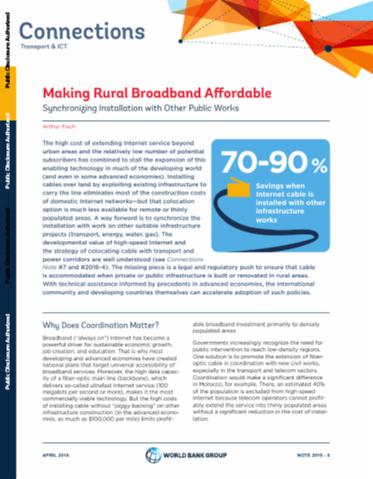Resource information
The high cost of extending Internet service beyond urban areas and the relatively low number of potential subscribers has combined to stall the expansion of this enabling technology in much of the developing world (and even in some advanced economies). Installing cables over land by exploiting existing infrastructure to carry the line eliminates most of the construction costs of domestic Internet networks—but that colocation option is much less available for remote or thinly populated areas. A way forward is to synchronize the installation with work on other suitable infrastructure projects (transport, energy, water, gas). The developmental value of high-speed Internet and the strategy of colocating cable with transport and power corridors are well understood. The missing piece is a legal and regulatory push to ensure that cable is accommodated when private or public infrastructure is built or renovated in rural areas. With technical assistance informed by precedents in advanced economies, the international community and developing countries themselves can accelerate adoption of such policies.


